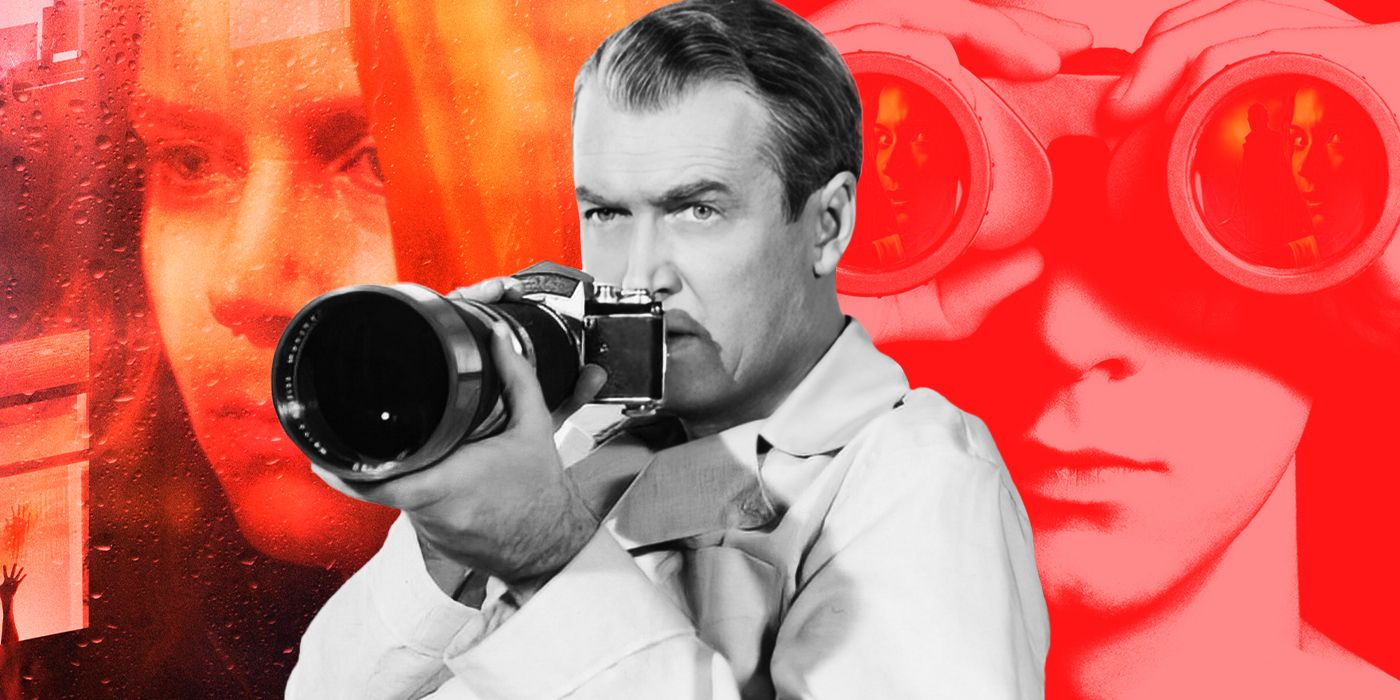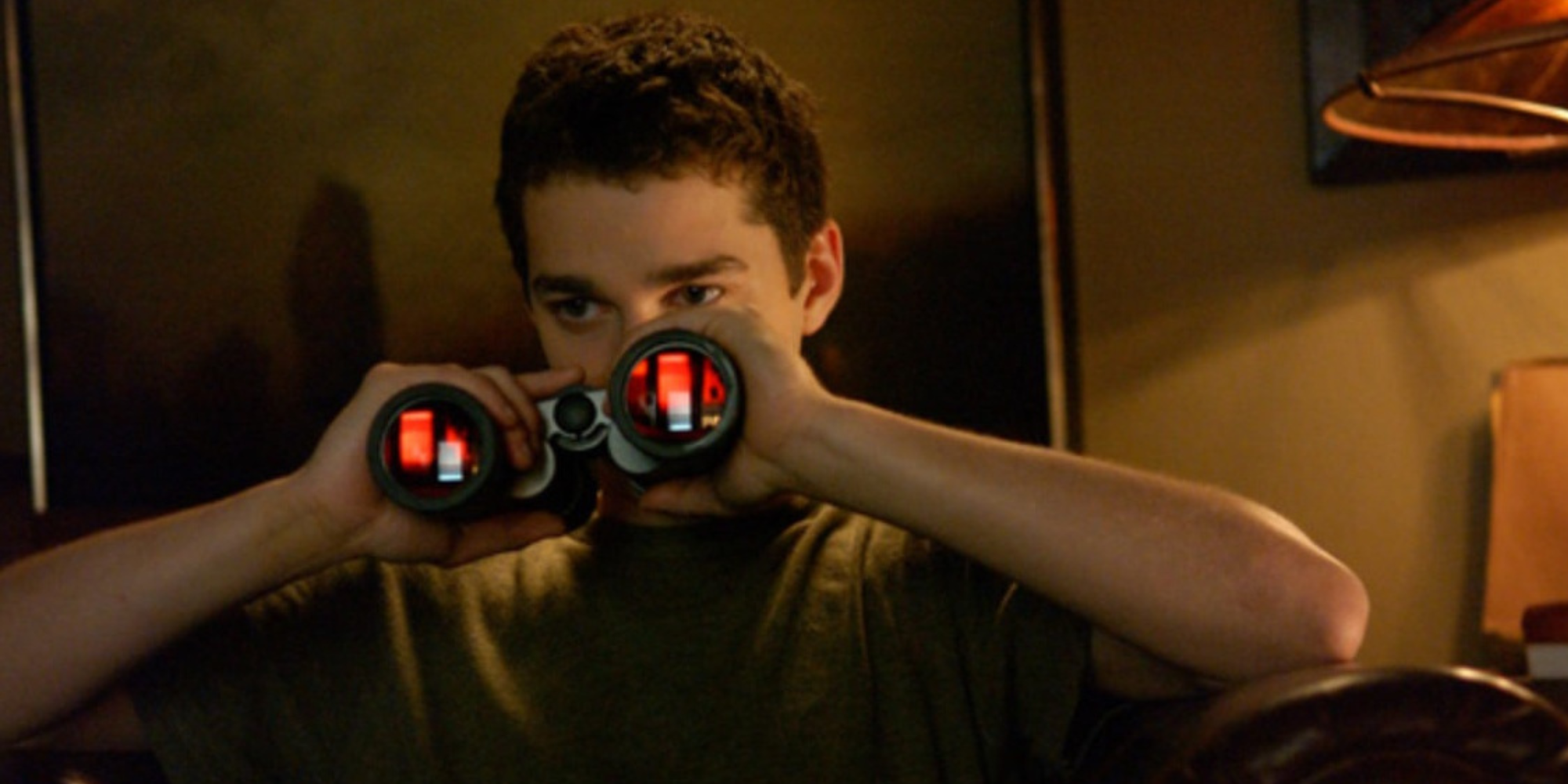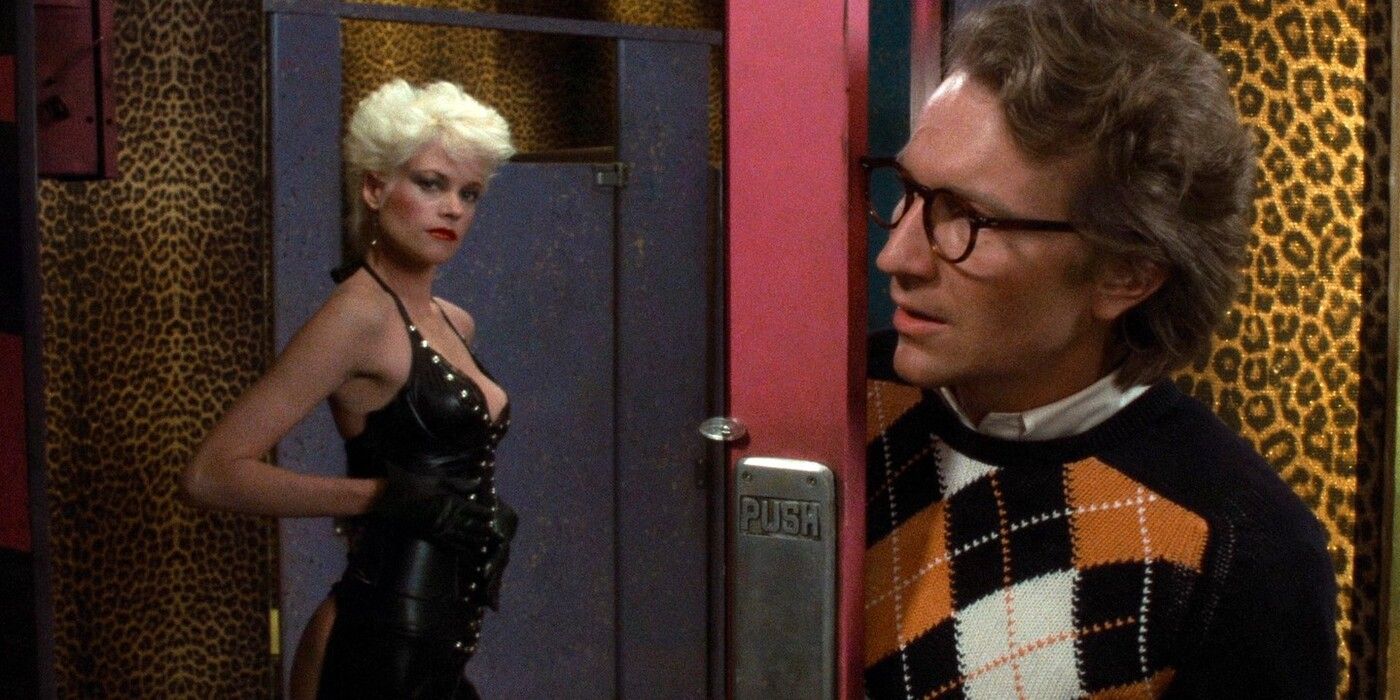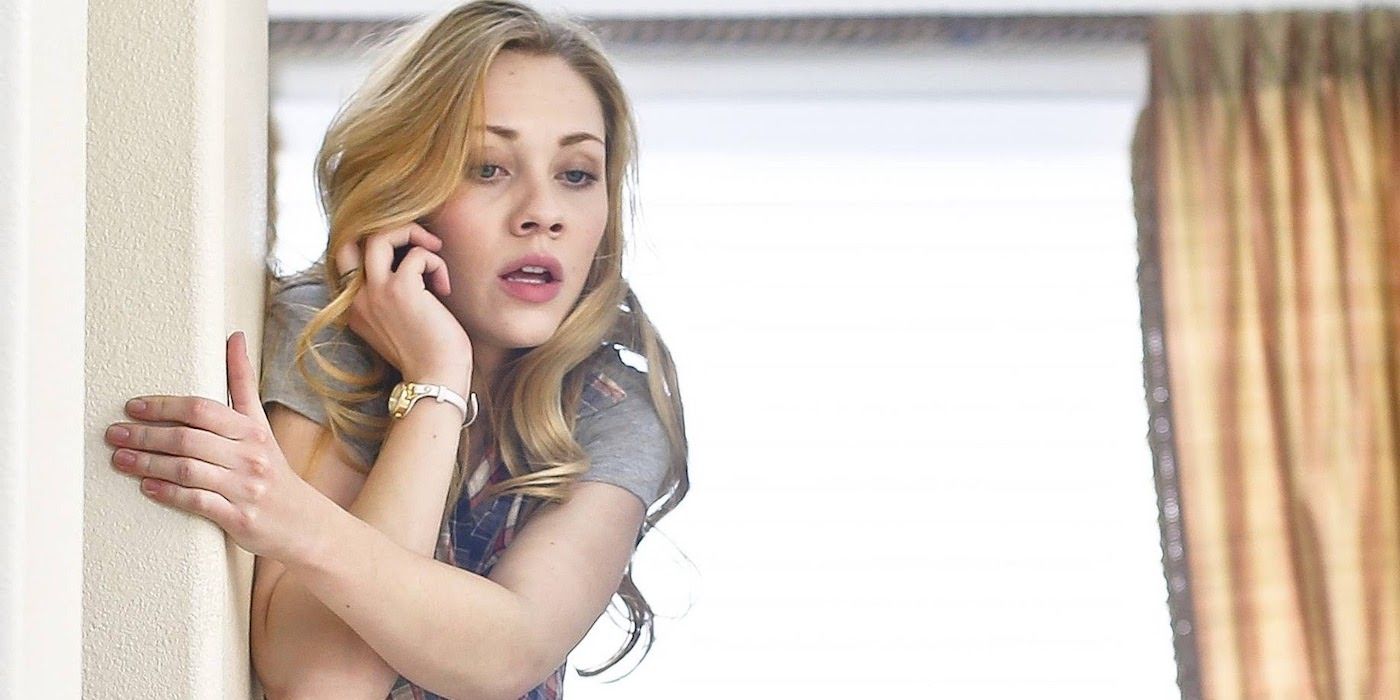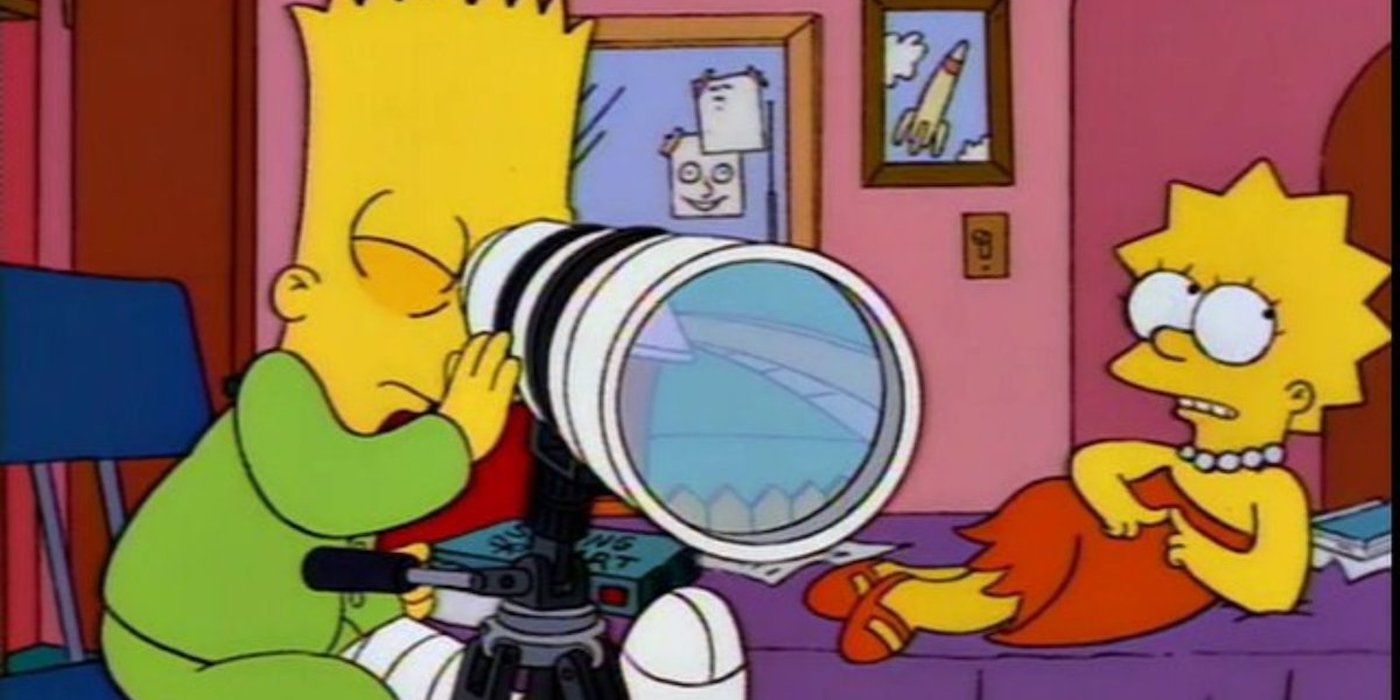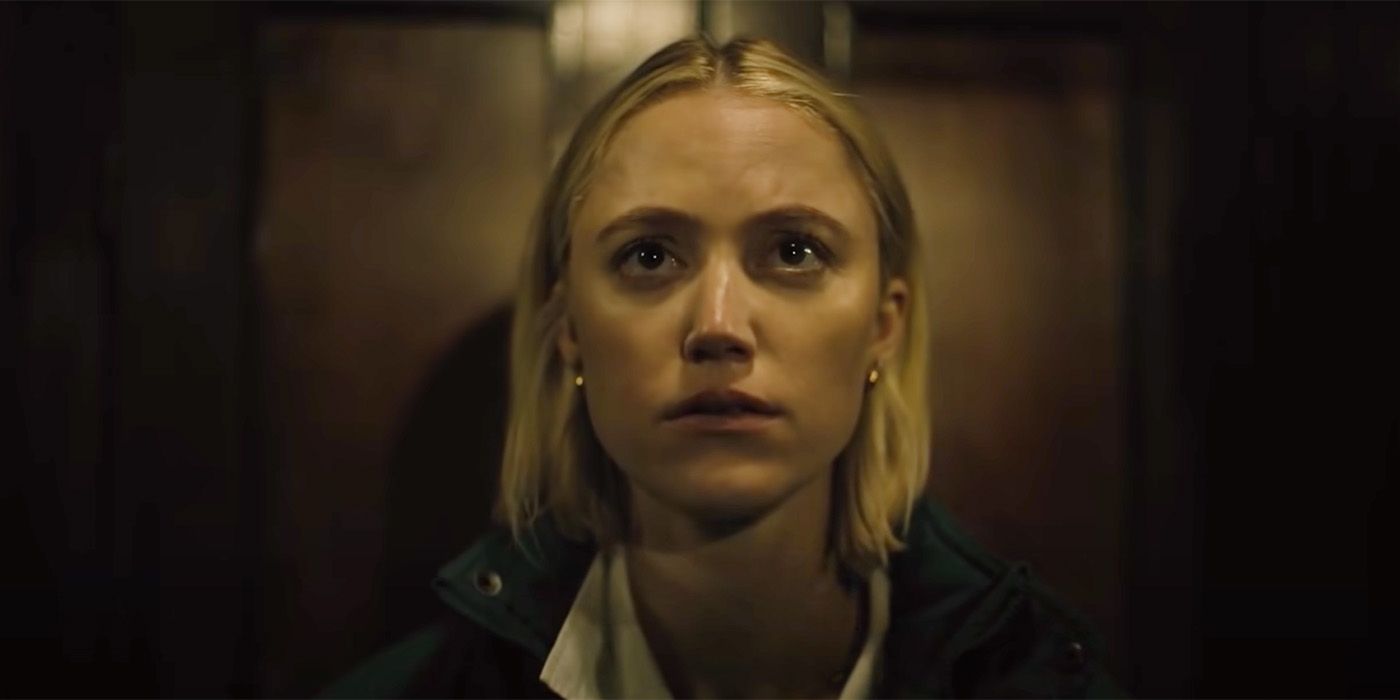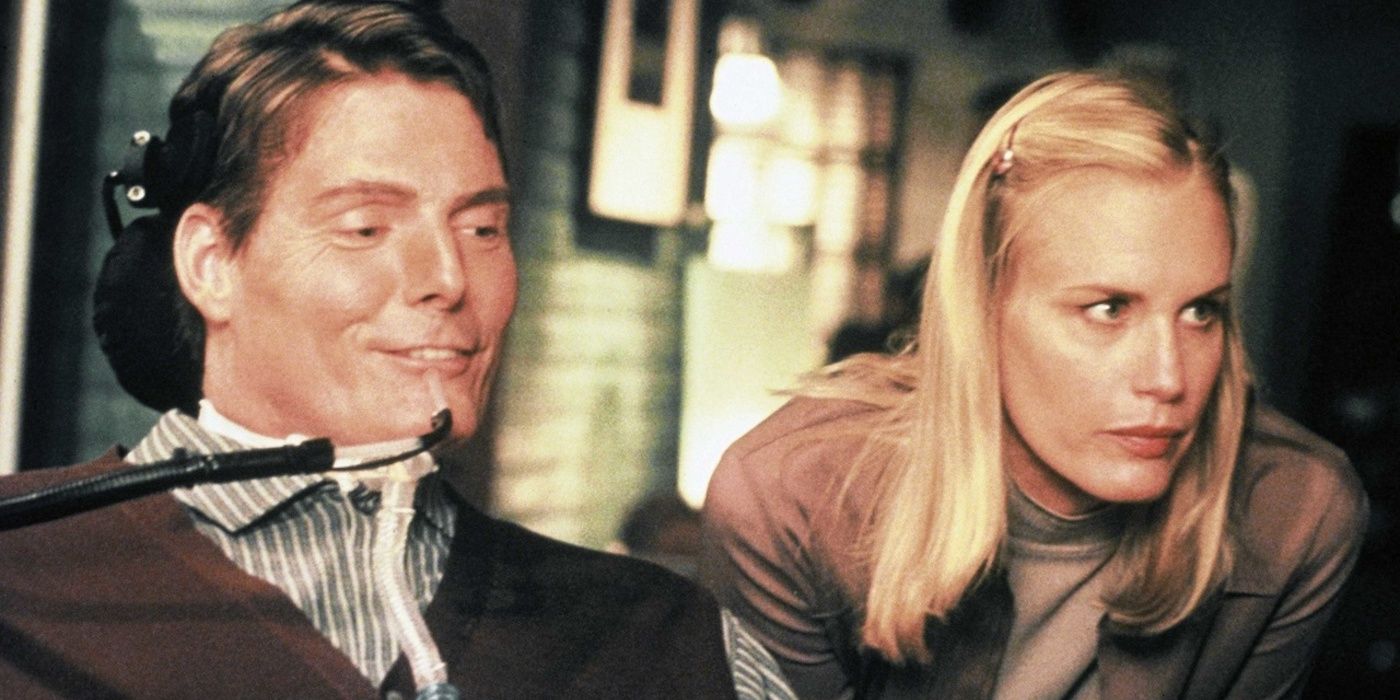Alfred Hitchcock’s Rear Window has a lasting influence that, almost 70 years later, continues to pop up in films and popular culture with surprising regularity. Hitch, like all the greats of cinema, just tends to have that power: His movies live on, both directly and indirectly, as classic works that continue to warrant revisiting, and also as the innumerable films that emulate them to varying degrees.
Maybe it’s that the novelty of Rear Window’s plot is too intriguing to let die — a voyeuristic, photographer in a wheelchair (his leg broken in a skiing accident), confined to his spacious Manhattan flat during the peak of a heatwave, witnesses what he believes to be a murder in the windows of a neighboring building. It’s a premise too ingenious to fail, and in the hands of the Master of Suspense, Rear Window became one of the great thrillers of the 1950s. Many decades later, it loses none of its power, and it stands alongside Vertigo and Psycho as one of Hitchcock’s most impactful films, one whose reach can still be seen to this day in everything from Disturbia to The Woman in the Window.
‘Disturbia’ Modernizes the Basic Premise of ‘Rear Window’ For a Younger Audience
Disturbia is as blatant of a Rear Window clone as they get. While mourning the gruesome death of his father, teenage Kale (Shia LaBeouf) assaults his high school teacher and is consequently put on house arrest. He’s quickly bored by his sedentary suburban life, and he takes to spying on two of his neighbors, a teenage girl (Sarah Roemer) and a middle-aged man (David Morse). Before long, Kale’s spying leads him to believe that his neighbor is a wanted serial killer (spoiler alert: he is).
The similarities between Disturbia and Rear Window were so plentiful that it even led to a lawsuit being filed on behalf of the trust that owns It Had to be Murder, a short story by Cornell Woolrich that Rear Window was adapted from. Ultimately, though, a judge ruled in favor of producer Steven Spielberg and Disturbia, citing that the plots between the two films are “similar only at a high, unprotectable level of generality.”
When Disturbia works, it’s largely due to its ability to revitalize the tried and true formula already established by Rear Window. It’s not just that it builds itself around a much more youthful character than James Stewart’s (it’s ultimately a teen film, after all), but it structures itself around the style and aesthetic of a popcorn-friendly slasher flick. On paper, it feels wholly unoriginal, and on a narrative level, it ultimately is. Still, there’s something to be said about transforming one of Hitchcock’s most memorable films into a work perfect for horror-craving teens. Also, there’s a Lynchian undertone to the whole thing, as it transfers the setting from the bustling hub of Manhattan to the picturesque, family-friendly suburbs: somewhere beneath the American suburbia often lies an insidious world of violence and cruelty.
From ‘Body Double’ to ‘The Woman in the Window, ‘Rear Window’ Is Frequently Reimagined
One of the most recent examples of Rear Window showing its lasting legacy is in 2021’s The Woman in the Window. The Netflix film, adapted from the novel by A.J. Finn, stars Amy Adams as an agoraphobic psychologist who — you guessed it — witnesses a murder in an adjacent building from her window. It’s a movie loaded with clumsy homages to a number of films it's indebted to, first and foremost Rear Window. There’s even a scene early on where Adams’s character watches the Hitchcock film, giving a nod in the direction of its undeniable influence. The Woman in the Window, unfortunately, fails to do or say anything new with the old formula, with the only notable aspects (an agoraphobic psychologist eventually catching a serial killer) being lifted from the 1995 film Copycat.
Body Double, an erotic thriller by Brian De Palma, is largely a homage to Hitchcock’s filmography, with Rear Window being its most comparable work. In it, Jake Scully (Craig Wasson) is an out-of-work actor with claustrophobia who takes to spying on a friend’s (Gregg Henry) neighbor (Deborah Shelton) through a telescope in the Hollywood hills. When he sees her getting abused, a series of violent consequences occur. It’s inevitable that De Palma would riff on Rear Window, considering how notable Hitchock's influence is on his entire body of work. Dressed to Kill, for instance, contains plenty of the essential genetic makeup of Psycho, even if reimagining it significantly. It touches on many of the same themes as Rear Window, such as the pleasures of voyeurism and the darkness hidden in otherwise “regular” lives. Due to De Palma’s undeniable knack for building suspense and crafting thrilling movies, Body Double is arguably the strongest of the Rear Window quasi-remakes.
Not Every 'Rear Window' Homage Is Good
Two other Read Window-inspired flicks, Abominable from 2006 and Lifetime’s Stalked By My Neighbor, belong in a separate category entirely. Wavering between “so-bad-it’s-good” and just plain bad, these two works take bizarre if imaginative approaches to the voyeuristic plot points of Hitchcock’s film. Abominable follows a paraplegic voyeur (Matt McCoy) who spends his time soaking in the view of a group of college girls vacationing in a nearby cabin for a bachelorette party. When he sees one of the women (Ashley Hartman) get violently kidnapped, he’s led to believe that the assailant is actually (who’d have guessed??) a Sasquatch.
Stalked By My Neighbor is a more direct Rear Window copy, crafted in a way that only Lifetime Movie Network could ever do. Recovering from a brutal home invasion, a young woman (Kelcie Stranahan) becomes obsessed with taking candid photos of her neighbors discreetly through her bedroom window. Through her camera lens, she notices an ominous shadow, and, later, a dead body. If you can imagine a thrill-less, campy version of Disturbia, that's Stalked By My Neighbor. It’s teen-centered, but needlessly twisty and preposterous as LMN movies tend to be. As a whole, Abominable and Stalked By My Neighbor feel more akin to parody than genuine homage.
Like Many Hitchcock Films, ‘Rear Window’ Is Often Parodied
Rear Window’s lasting iconography was not only destined for copying but spoofing as well. Countless films and TV shows spoof the plot points of Rear Window. The excellent The Simpsons episode “Bart of Darkness” features a gag-heavy plotline in which Bart (Nancy Cartwright), after breaking his leg in a swimming pool, is put in a wheelchair and stuck in his room. There, he spies on his neighbors through a telescope and becomes convinced that Ned Flanders (Harry Shearer) has committed a murder.
That ’70s Show’s Season 3 Halloween episode, “Too Old To Trick or Treat, Too Young to Die,” circles around a set of Hitchcock spoofs, including a Rear Window parody that follows a wheelchair-using Fez (Wilmer Valderrama) spying on his neighbors and believing he witnessed a murder. The ‘80s sitcom ALF has an episode where the titular Melmacian (uh-huh, you guessed it) believes he witnesses a murder whilst spying on his neighbors.
At a certain point, it feels like too easy of a target to spoof Rear Window, considering how frequently the movie is riffed on by sitcoms and animated shows alike. Raising Hope did it in a way that felt playful, with some of Grace Kelly’s Rear Window wardrobe being replicated for the episode. Mike & Molly, Home Movies, Family Guy, and The Flintstones, among many others, all had Rear Window parody episodes, with vastly varying ranges of quality. Very few, though, with The Simpsons and Monk being the best examples, make genuine humor out of the parodies that don’t feel like lazy cultural references.
'Watcher' and 'Kimi' Put a Modern Spin on the Themes of 'Rear Window'
Even when not reimagining the plot of Rear Window directly, many films (thrillers and the like, typically) continue to be influenced and inspired by Hitchcock’s film. Chloe Okuno’s Watcher from 2022 is a beautifully-shot slow-burning thriller that features a never-better Maika Monroe as an American (uncomfortably) abroad in Romania who notices a man (Burn Gorman) watching her from his window across the way. She soon suspects the man of being “the Spider,” a serial killer targeting women in the streets of Bucharest.
Watcher is a superbly crafted film that, while admittedly leaning into the same themes of voyeurism and perversity as Rear Window and Body Double, nevertheless crafts its own style and voice while exploring new themes. While her concern that the man has selected her as his next target continues to grow, nobody around her believes her fear to be warranted. Her boyfriend (Karl Glusman) shrugs it off with indifference. Watcher thus explores the way that women are often ignored or dismissed as hysterical, with the real-world application of the film’s themes feeling very timely in a #MeToo era.
Another flick influenced by Rear Window is Steven Soderbergh’s Kimi, which stars Zoë Kravitz as an agoraphobic millennial living with increasing fear during the COVID lockdown in New York City. She works as a data monitoring for the titular Kimi (a stand-in for Alexa, Siri, what have you), a Smart Device that utilizes eavesdropping on people’s conversations in order to improve its algorithm. Of course, our protagonist hears what sounds like a murder over Kimi, and the rest carries out like a combination of Rear Window and The Conversation. With a technical mastery from Soderbergh and a swooning orchestral score from Cliff Martinez that assuredly aims to mimic Bernard Hermann’s iconic work for Hitchcock, Kimi shows how a Hitch homage can be done right. Though not directly lifted from Rear Window, it feels like a distant relative, to which the resemblance still remains uncanny.
The Legacy of 'Rear Window' Will Continue to Endure
And there’s plenty more where that came from. 1978’s Night Watch follows a widow (Elizabeth Taylor) who sees a dead body in her neighbor’s long abandoned home. Brian De Palma’s Blow Out again feels like a variation of Rear Window, with a fair amount of Michelangelo Antonioni’s Blow Up thrown into the mix. In 1998, a made-for-TV remake of Rear Window (actually titled Rear Window this time), put Christopher Reeve in Jimmy Stewart’s role. It’s really more of the same thing: a quadriplegic man who enjoys peeping on his neighbors witnesses a murder. He attempts to alert others who slowly begin to believe him, and...well you can generally figure out how these things end.
When all is said and done, there’s no overstating the endless influence Rear Window has had on cinema. Maybe it’s just that Hitch really truly made a masterpiece, playing all the right notes and leaving the audience fully satiated. And maybe there’s something else, too — maybe Rear Window continues to pop up in countless films nearly 70 years later because it says something fundamentally true about us, something that fascinates us in a way that we can’t look away from. Maybe we just like watching. It’s all a bit like movie-going, after all, watching people from afar, discreetly, anonymously, unable to do anything to influence what happens.

